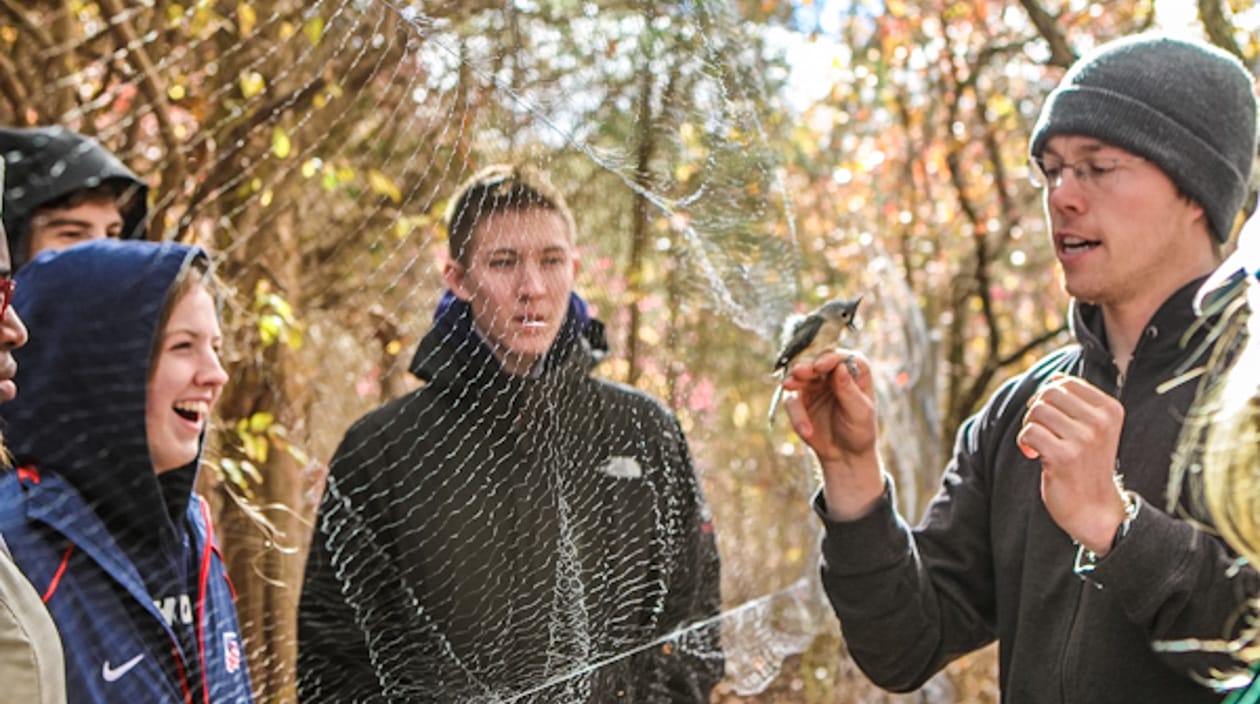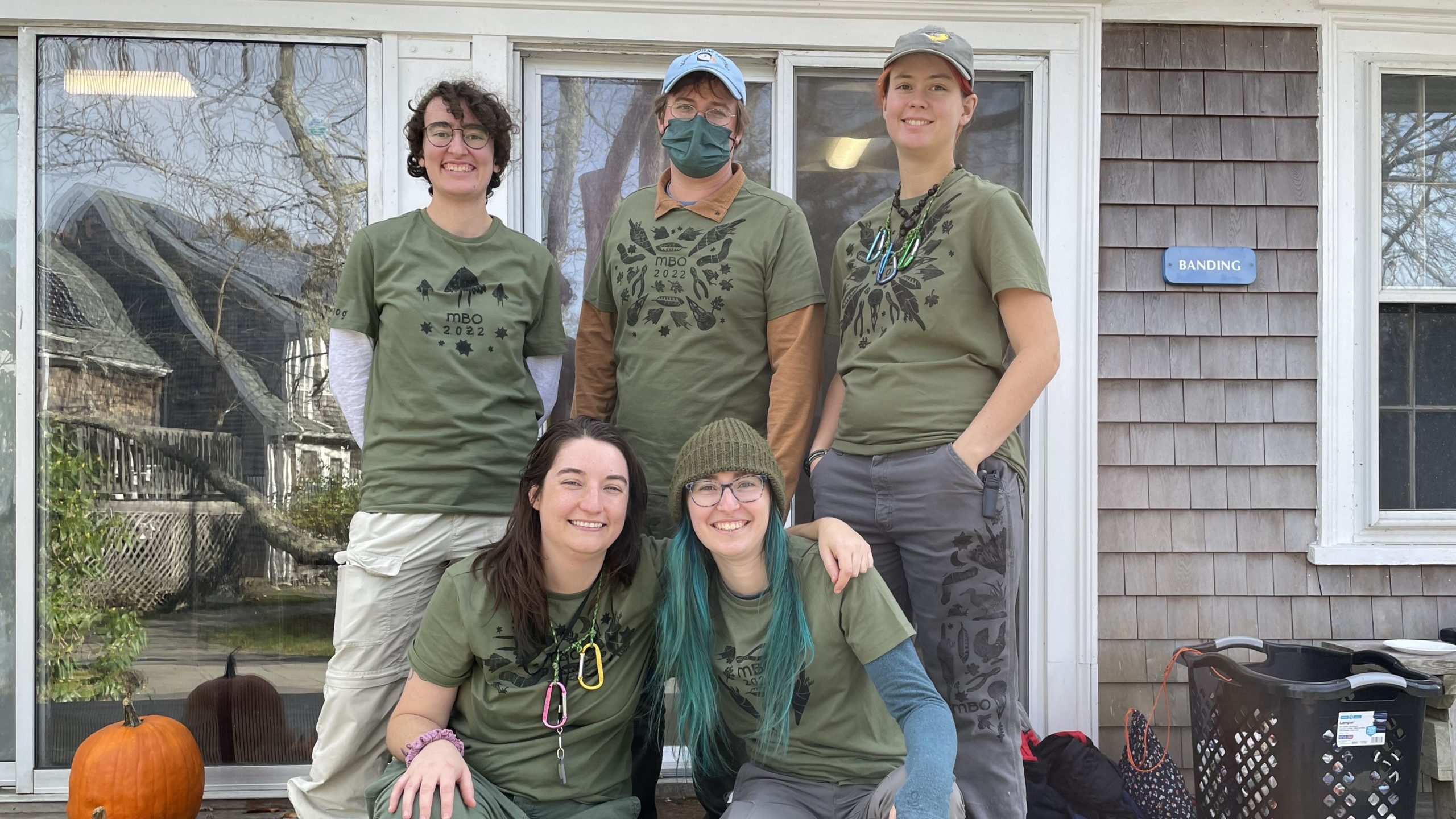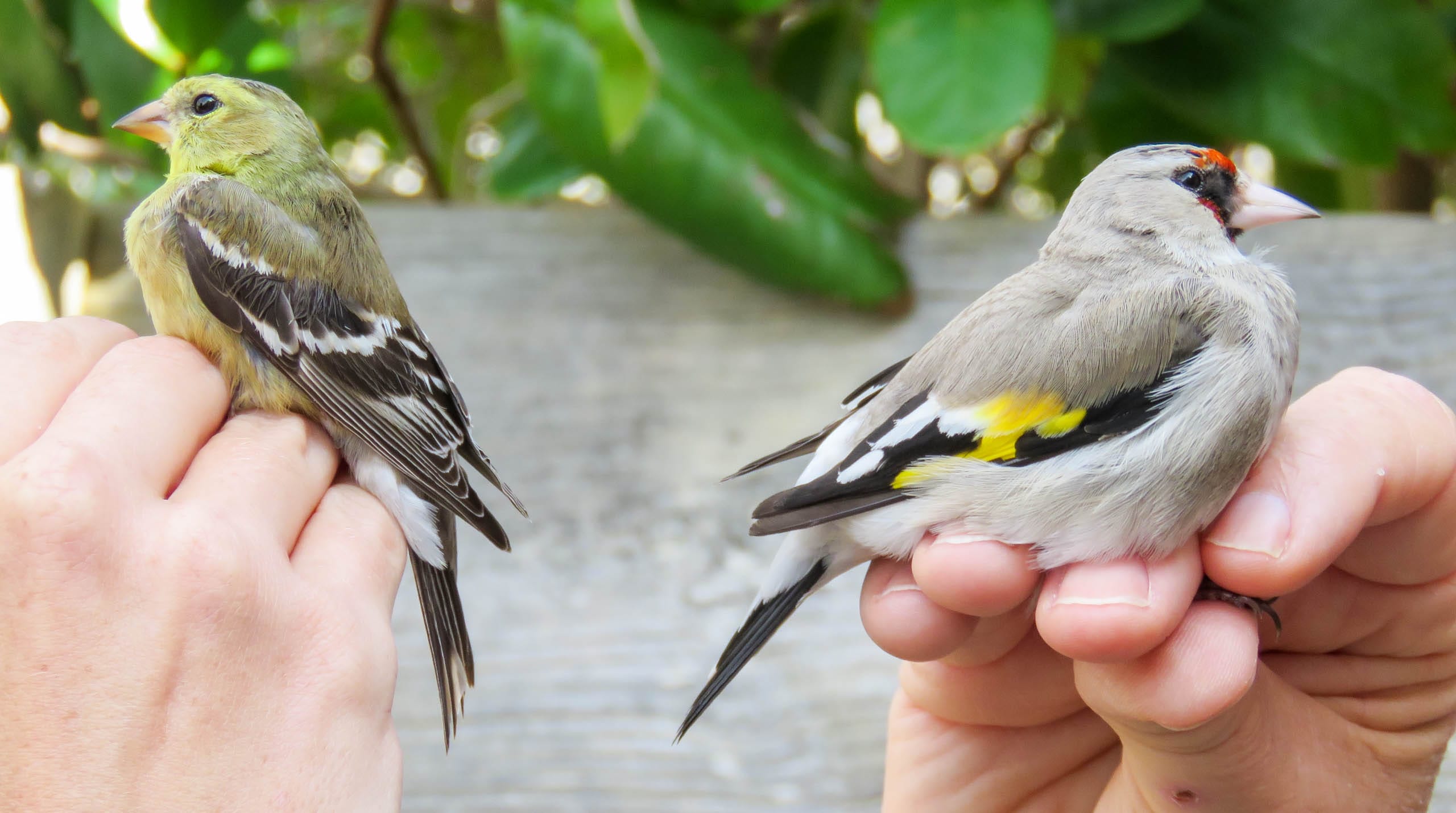Overview
At the Trevor Lloyd-Evans Banding Lab, we use science and education to create opportunities that connect people to nature. Migratory and resident birds have been banded at our Manomet’s Plymouth, Mass. location since 1966. Manomet’s Founding Director Kathleen (Betty) Anderson banded the first recorded bird – a Black-capped Chickadee.
For more than 50 years, Manomet has maintained a spring and fall migration bird banding program. Bird banding is an effective method of research that helps answer important questions on issues from conservation to climate change. Manomet’s banding lab, one of the first bird observatories established in North America, focuses on areas including:
- Migration: When and where birds arrive can tell us about habitat and food availability. This information can be used to inform habitat management and land use strategies.
- Population: With the data we collect in the lab, we can produce estimates on changes in population and notate trends over time.
- Life history: Banding contributes valuable information on longevity, habitat, diet, and other physiological trends across species.
- Productivity: Banding helps us detect shifts in age or sex ratios that would otherwise go undetected.
Manomet staff has recorded over 1,000 plant, animal, and fungus species on site, showing the value of our coastal forest and shoreline as a rich laboratory for research.

Why band birds?
Migratory bird banding operations represent an underutilized source of data about bird migration. Long-term data sets in ecology, like ours, may lead to discoveries often missed in shorter-term studies, and are critical for establishing baselines and tracking changes in the natural world. Because birds are widely surveyed by professional and amateur observers alike, and their natural histories are often well-understood, wild bird populations can be useful sentinels of environmental change and ecosystem condition.
Check here for weekly summaries of current and past banding seasons.
The banding team operates 50 mist nets on the property surrounding Manomet headquarters in southeastern Massachusetts along Cape Cod Bay. Nets are kept open during daylight hours, Monday through Friday, in the spring and fall. Banders walk the net lanes, safely removing trapped birds and returning them to the lab where their species, age, sex, weight, and fat content are measured and recorded. We have banded over 250,000 birds and handled over 400,000 since banding began on the property in 1966. We band around 2,500 new birds each year.
As Manomet’s longest-standing program, the banding lab has helped train hundreds of prospective researchers, educators, and conservation advocates since its inception. We educate about 1,000 visiting school children, volunteers, and college students every year. We strive to engage people of all ages with nature and to measurably increase people’s understanding of environmental change.





 Back to all
Back to all
